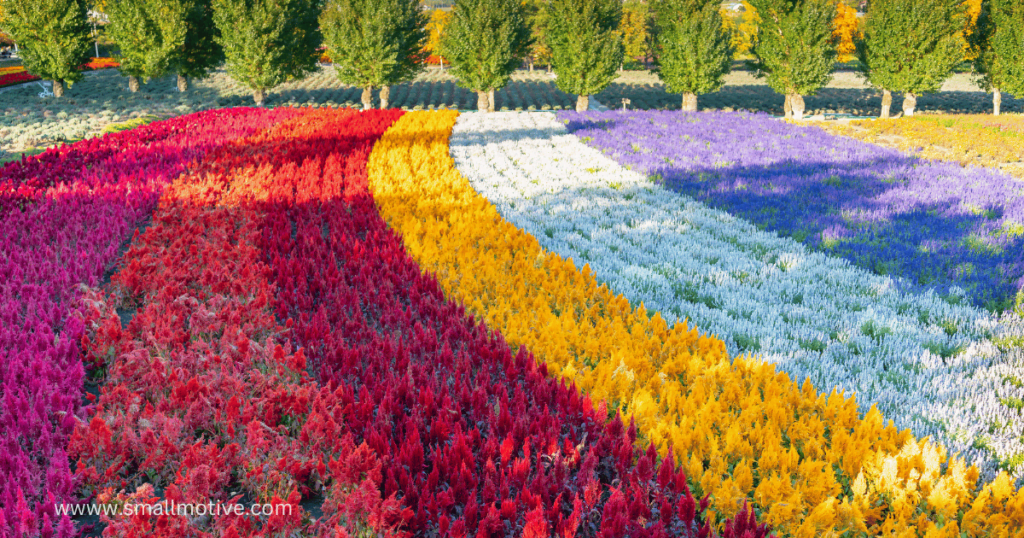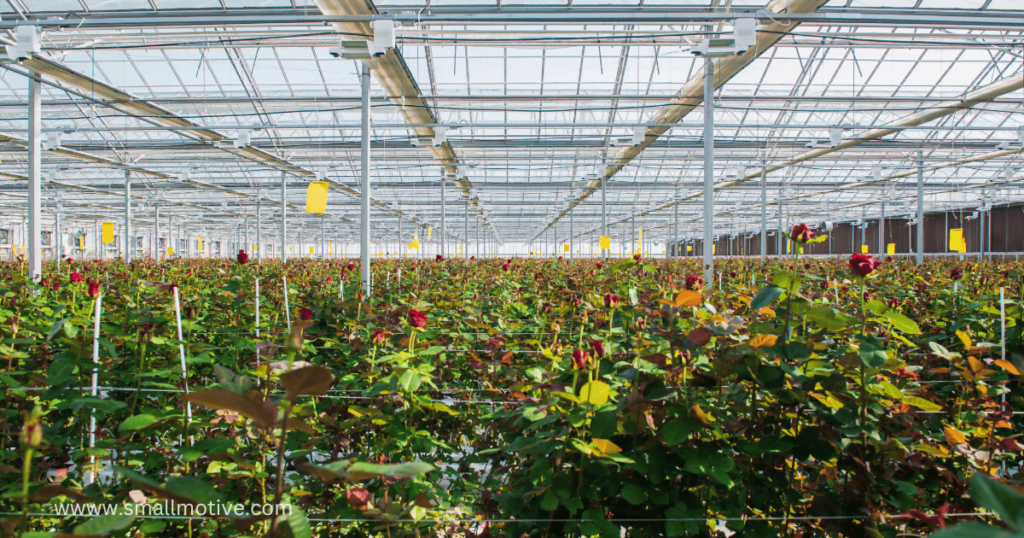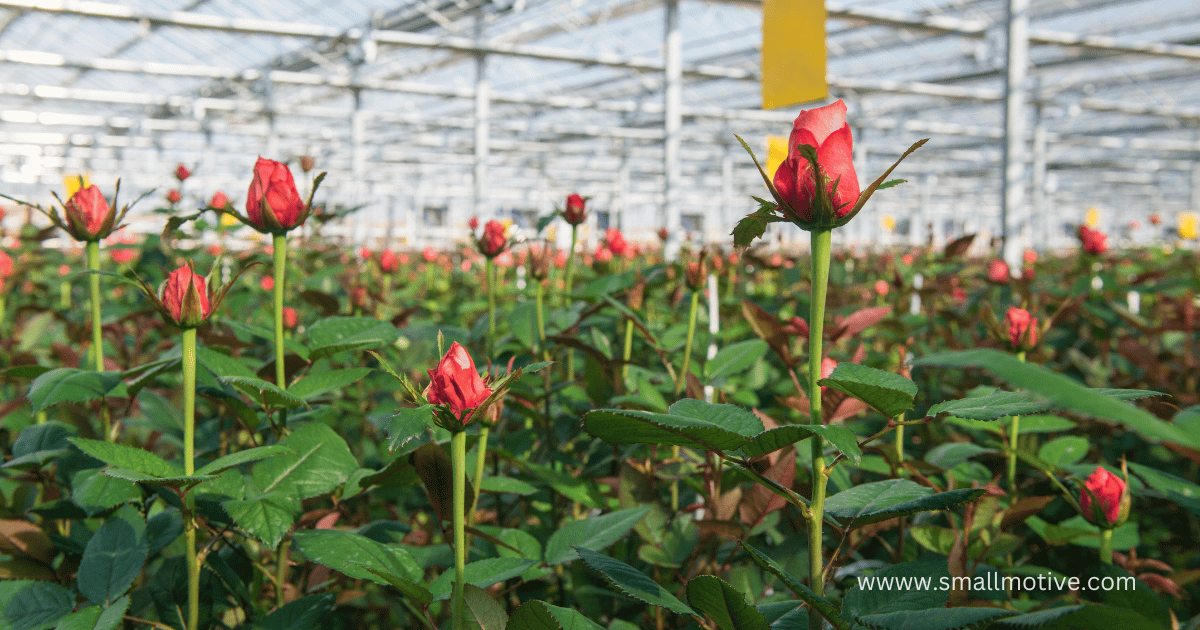Introduction
Step into the captivating world of rainbow rose farming, where vibrant, multi-hued blooms come to life. This comprehensive guide will delve into the intricate art of cultivating these mesmerizing flowers, providing you with the necessary knowledge and techniques to thrive in this niche market. From the history and allure of rainbow roses to the practical steps involved in site preparation, propagation, and post-harvest handling, this article aims to equip aspiring and established rose growers with the insights needed to cultivate these colorful wonders.
Whether you’re a seasoned rose enthusiast or a newcomer to the world of specialty flower farming, this guide will serve as your valuable resource, empowering you to navigate the rewards and challenges of rainbow rose cultivation. Immerse yourself in the rich history and enchanting appeal of these vibrant blooms, and embark on a journey to master the art of growing rainbow roses that will captivate your customers and transform your farming operations.
Key Takeaways
- Discover the allure and history of rainbow roses, the captivating multi-colored blooms that have captured the hearts of consumers worldwide.
- Learn the essential factors to consider when selecting the right rainbow rose cultivars for your farming operations, including climate suitability, disease resistance, and market demand.
- Explore the optimal site preparation and growing conditions required for successful rainbow rose cultivation, including soil requirements and climatic factors.
- Gain insights into the various propagation techniques, from seed propagation to vegetative propagation, to ensure a consistent and reliable supply of high-quality planting material.
- Dive into the comprehensive guide on the key aspects of rainbow rose farming, from site selection to post-harvest handling, empowering you to cultivate these vibrant blooms with confidence and expertise.
Introduction to Rainbow Rose Farming
The captivating world of rainbow rose farming offers a unique opportunity for growers to cultivate vibrant, multi-colored blooms that have captivated the hearts of consumers worldwide. These stunning roses, with their mesmerizing array of hues, have become a sought-after specialty in the floriculture industry, appealing to those seeking extraordinary and visually striking ornamental flowers.
The Allure of Vibrant, Multi-Colored Roses
The appeal of multi-colored roses lies in their remarkable ability to capture the imagination and evoke a sense of wonder. These roses, with their ability to seamlessly blend and transition between a spectrum of colors, from deep reds and purples to soft pastels and vibrant yellows, have a captivating quality that sets them apart from traditional single-color blooms. Their unique and mesmerizing appearance has made them a favorite among floral enthusiasts, event designers, and those seeking to add a touch of elegance and sophistication to their gardens or arrangements.
A Brief History of Rainbow Rose Cultivation
The history of rainbow rose development can be traced back to the late 20th century when innovative horticulturists and rose breeders began experimenting with techniques to create these stunning multi-hued flowers. Through selective breeding, genetic manipulation, and advanced cultivation practices, they were able to introduce and refine various rainbow rose cultivars, each with its distinct color patterns and growth characteristics. Today, specialty rose cultivation has evolved into a thriving niche within the floriculture industry, catering to the ever-growing demand for these captivating and visually striking blooms.

Choosing the Right Varieties
When it comes to successful rainbow rose farming, the selection of the right varieties is a crucial step. Growers must carefully consider the diverse array of popular multi-colored rose cultivars available to ensure their crop meets the demands of the market and thrives in their local growing conditions.
Popular Rainbow Rose Cultivars
Some of the most sought-after and widely-grown rainbow rose varieties include the vibrant ‘Rainbow Rhapsody,’ the delicate ‘Kaleidoscope,’ and the stunning ‘Monet’s Palette.’ Each of these specialty rose cultivars boasts its unique color patterns, growth habits, and bloom characteristics, offering growers a range of options to cater to their customers’ preferences.
Factors to Consider When Selecting Varieties
When choosing rainbow rose varieties for their farming operations, growers must carefully weigh several key factors. Climate suitability is of utmost importance, as different rainbow rose cultivars may thrive in specific temperature and humidity ranges. Disease resistance is another critical consideration, as some varieties may be more susceptible to common rose ailments, requiring additional management strategies. Finally, market demand and customer preferences should guide the selection process, ensuring growers meet the evolving needs of their target audience.

By thoughtfully evaluating these factors for choosing rainbow rose varieties, farmers can build a diverse and resilient specialty rose production system that delivers consistently high-quality, vibrant blooms to their customers.
Site Preparation and Growing Conditions
Establishing a successful rainbow rose farm begins with meticulous site preparation and understanding the optimal growing conditions for these vibrant, multi-colored blooms. From the ideal soil requirements to the climatic conditions necessary for their cultivation, this section will guide you through the essential factors to consider when setting up your rainbow rose operation.
Optimal Soil Requirements
Thriving rainbow roses demand a well-drained, nutrient-rich soil with a slightly acidic pH level, typically between 5.5 and 6.5. The soil should be composed of a balanced combination of organic matter, such as compost or peat moss, and mineral components like sand or loam. Proper soil drainage is crucial to prevent waterlogging and ensure the roots receive adequate oxygen. Additionally, the soil should be amended with essential nutrients, including nitrogen, phosphorus, and potassium, to support the robust growth and vibrant color development of your rainbow rose plants.
Climatic Conditions for Successful Cultivation
The climatic conditions for rainbow rose cultivation are equally important as the soil requirements. These specialty roses thrive in temperate climates with moderate temperatures, typically ranging from 60°F to 80°F (15°C to 27°C) during the day and a few degrees cooler at night. Consistent, moderate humidity levels between 60% and 80% are also essential for the optimal growth and development of rainbow roses. Adequate sunlight exposure, with a minimum of 6 hours of direct sunlight per day, is necessary to promote the formation of the distinct color patterns that make these roses so captivating.

When selecting a site for your rainbow rose farm, consider factors such as soil composition, drainage, and the local climate to ensure your plants receive the optimal growing conditions. Additionally, if you plan to cultivate rainbow roses in a controlled environment, such as a greenhouse, ensure that the facility can maintain the desired temperature, humidity, and light levels throughout the year.
Propagation Techniques
When it comes to cultivating vibrant, multi-colored rainbow roses, propagation is a crucial step in ensuring a consistent and reliable supply of high-quality planting material. Growers can choose from two primary methods: seed propagation and vegetative propagation.
Seed Propagation vs. Vegetative Propagation
Seed propagation involves growing new rainbow rose plants from seeds, while vegetative propagation utilizes cuttings, grafting, or tissue culture to clone existing plants. Each method offers distinct advantages and disadvantages that growers must consider when selecting the most suitable approach for their rainbow rose farming operation.
Seed propagation allows for greater genetic diversity, as each seedling may exhibit unique color patterns and growth characteristics. This can be beneficial for developing new and innovative rainbow rose cultivars. However, the process can be more time-consuming, and the resulting plants may display more variability in terms of bloom quality and consistency. In contrast, vegetative propagation ensures the replication of specific desirable traits, such as vibrant coloration and disease resistance, but it may limit genetic diversity within the planting stock.
Step-by-Step Guide to Propagating Rainbow Roses
Regardless of the propagation method chosen, growers must follow a series of careful steps to ensure successful rainbow rose propagation. This includes:
- Seed Germination: For seed propagation, growers must carefully select and prepare high-quality rainbow rose seeds, ensuring proper seed treatment and providing optimal growing conditions for germination.
- Cutting Preparation: In vegetative propagation, growers must take clean, healthy cuttings from parent plants, treating them with rooting hormones and maintaining the appropriate environmental conditions to encourage root development.
- Grafting Techniques: Grafting is another common vegetative propagation method, where growers skillfully join a scion (the upper part of the plant) from a desirable rainbow rose cultivar to a compatible rootstock, promoting rapid growth and consistent characteristics.
- Tissue Culture: For a more advanced and controlled approach, growers may opt for tissue culture propagation, which involves the sterile culture of rose plant cells or tissues to produce genetically identical, disease-free plantlets.

By mastering these specialized propagation techniques, rainbow rose growers can cultivate a reliable and diverse supply of healthy, high-performing planting material to ensure the successful and sustainable production of their vibrant, multi-colored blooms.
| Propagation Method | Advantages | Disadvantages |
|---|---|---|
| Seed Propagation |
|
|
| Vegetative Propagation |
|
|
Rainbow Rose Farming
Cultivating vibrant, multi-colored roses is a captivating and rewarding pursuit for both aspiring and experienced growers. This final section provides a comprehensive overview of the rainbow rose farming process, synthesizing the key aspects covered in the previous sections. From site selection and variety selection to propagation techniques and cultural practices, this guide will empower you to navigate the intricacies of successful rainbow rose production.
Paramount to the cultivation of these stunning blooms is the careful selection of the growing site. Optimal soil conditions, including the right pH levels, nutrient composition, and drainage characteristics, are essential for vibrant rose growth and development. Similarly, the climatic conditions, such as temperature, humidity, and sunlight exposure, must be conducive to the specific requirements of your chosen rainbow rose cultivars.
The propagation of rainbow roses is a critical step in establishing a consistent and reliable supply of high-quality planting material. Growers must carefully weigh the advantages and disadvantages of seed propagation versus vegetative propagation, implementing the appropriate techniques to ensure a robust and diverse rose inventory. By mastering the step-by-step processes of seed germination, cuttings, grafting, and tissue culture, you can cultivate rainbow roses with confidence and precision.
Successful rainbow rose farming also encompasses effective pest and disease management, meticulous harvesting practices, and diligent post-harvest handling. By integrating these key aspects into your cultivation strategy, you can optimize the quality, longevity, and market appeal of your vibrant, multi-colored roses. This comprehensive guide equips you with the knowledge and tools necessary to thrive in the captivating world of rainbow rose farming, empowering you to bring these enchanting blooms to life and delight discerning consumers worldwide.
FAQ
What are the most popular rainbow rose cultivars?
Some of the most popular rainbow rose cultivars include ‘Moondance’, ‘Kaleidoscope’, ‘Flamboyant’, and ‘Trilogy’. These varieties are known for their unique color patterns, ranging from soft pastels to bold, vibrant hues.
What are the ideal soil requirements for growing rainbow roses?
Rainbow roses thrive in well-draining, nutrient-rich soil with a slightly acidic pH between 5.5 and 6.5. The soil should have a balanced composition of organic matter, nitrogen, phosphorus, and potassium to support vigorous plant growth and vibrant bloom development.
How do I propagate rainbow roses?
Rainbow roses can be propagated through both seed and vegetative methods. For seed propagation, the seeds should be stratified and sown in a well-draining, sterile medium. Vegetative propagation, such as cuttings or grafting, is a more reliable method for maintaining the desired color patterns and characteristics of specific cultivars.
What climatic conditions are ideal for growing rainbow roses?
Rainbow roses prefer a temperate climate with moderate temperatures, moderate humidity, and ample sunlight exposure. They thrive in regions with average temperatures between 60-80°F and a consistent, well-distributed rainfall pattern throughout the growing season.
How do I ensure proper post-harvest handling of rainbow roses?
Proper post-harvest handling is crucial for maintaining the vibrant colors and freshness of rainbow roses. This includes prompt harvesting, immediate hydration, and storage in a cool, well-ventilated environment. Careful handling and transportation techniques can also help preserve the delicate blooms.
What are some common pests and diseases that affect rainbow roses?
Rainbow roses may be susceptible to common rose pests and diseases, such as aphids, thrips, powdery mildew, and black spots. Implementing an integrated pest management strategy, including cultural, biological, and targeted chemical control measures, can help mitigate these challenges and ensure the health and vigor of the plants.
